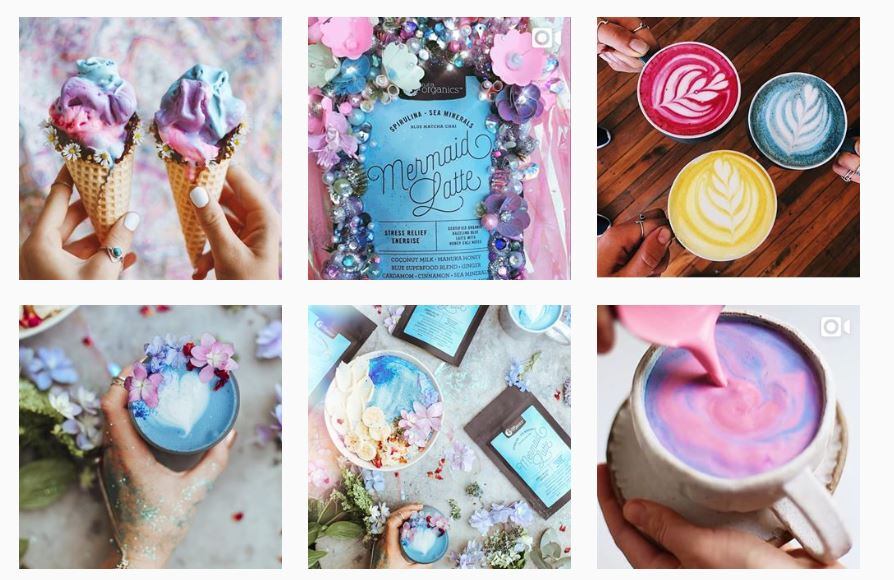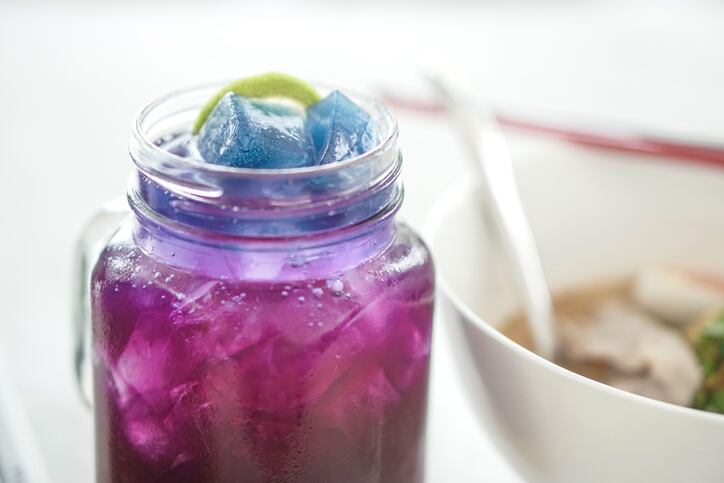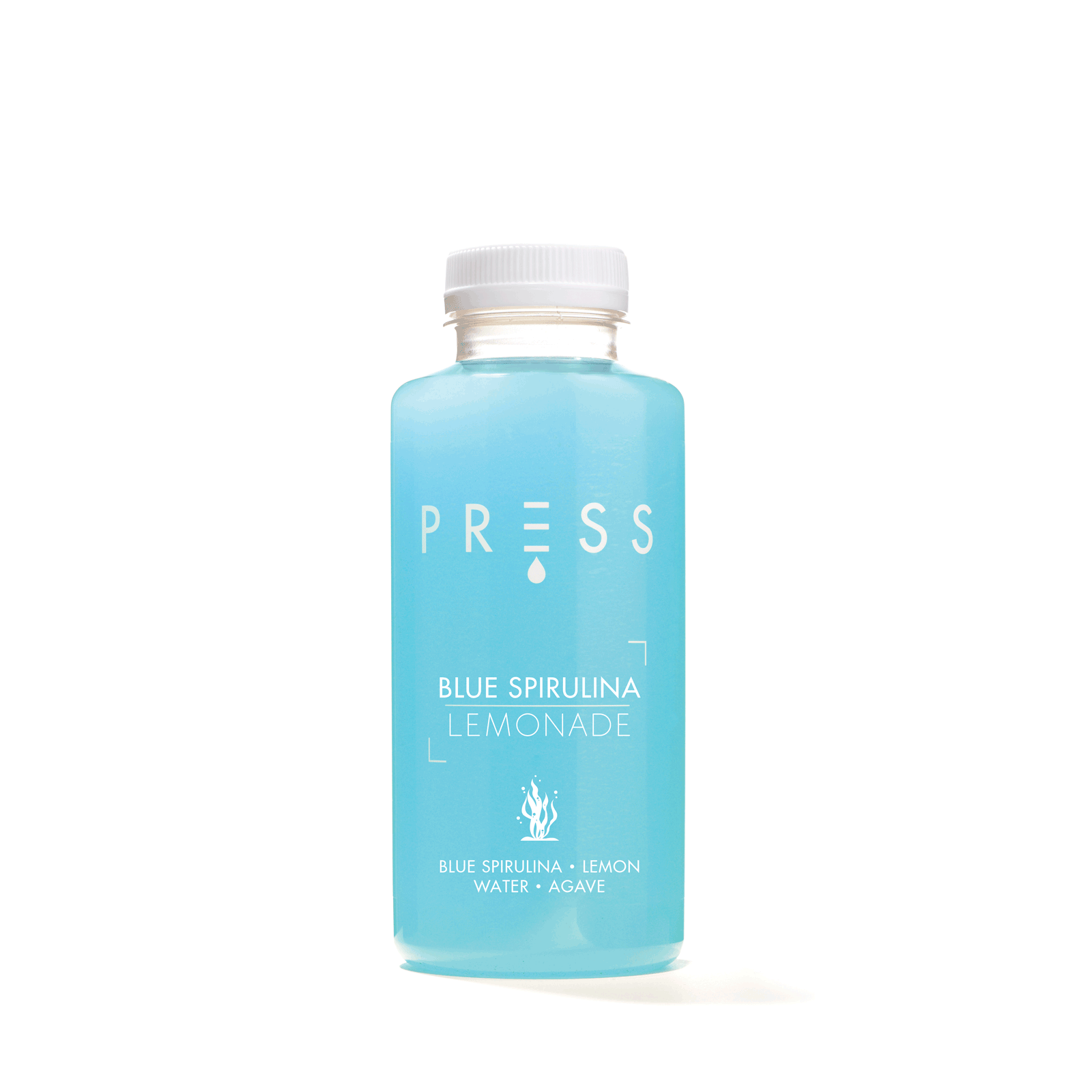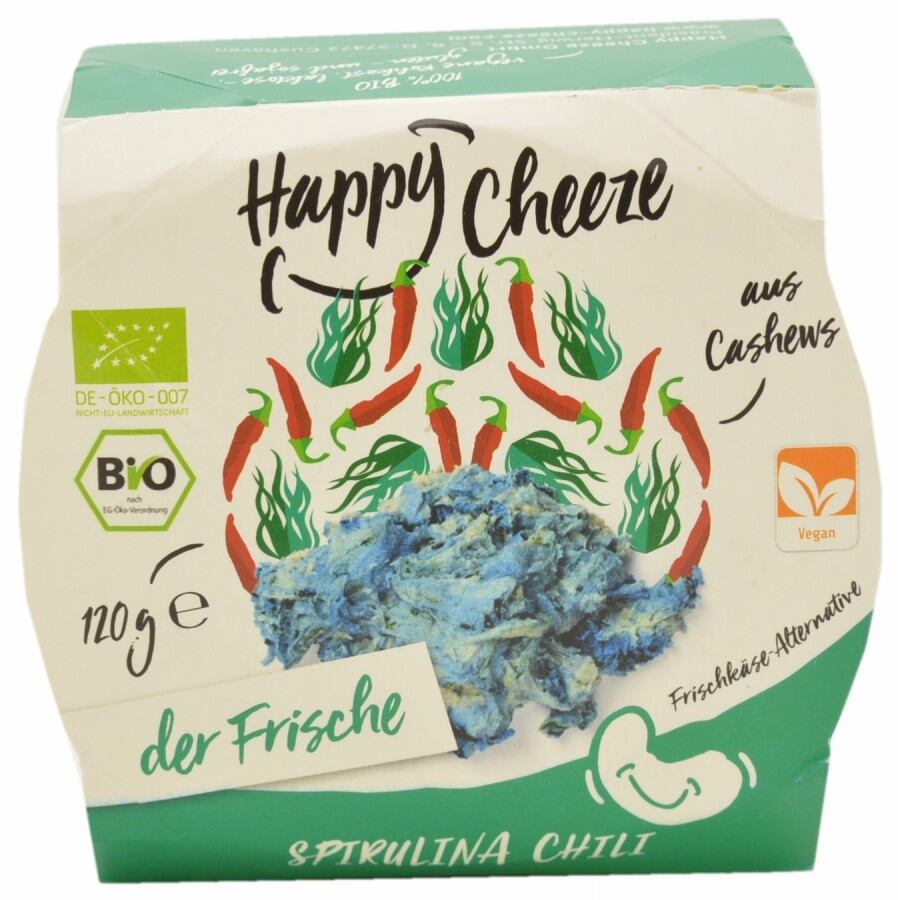“With the exception of a few examples such as blue cheese and blueberries, blue colours aren’t associated that positively with food and drink, however, more blue coloured foods are beginning to emerge,” writes Mintel food and drink analyst Emma Schofield.
“While once the taste of food was the first priority when it came to innovation, the rise of social media has spurred a rise in innovations that look striking

too. As a result, colours, particularly natural colours, are receiving greater attention."
A tea made with the dried flowers of the butterfly pea plant (Clitoria ternatea, also known as blue pea flowers) is a popular herbal drink in south-east Asia with a bright blue, pH sensitive colour that changes to purple with the addition of lemon juice.
Slightly better known is spirulina, a blue-green filamentous cyanobacteria (algae) that occurs naturally in freshwater and marine habitats.
Blue spirulina has already made its way into beverages – French start-up Smart Chimp’s antioxidant coconut water, Belgium’s B Blue or London-based Press’ blue lemonade are just some examples – and Schofield predicts spirulina lattes could overtake golden lattes, made with curcumin or turmeric, in the popularity stakes.
Health halo
The popularity of spirulina and butterfly pea flowers also draws upon their botanical origins.
Mintel identified plant-based ingredients as a top food trend for 2017, and in its latest trends report, predicted this would continue throughout 2018 thanks to the perception that these ingredients are inherently healthy.
“The often contradictory [nutrition] advice on what to avoid finds many consumers more interested in what food and drink offers instead of what it lacks.

This affirmational approach maintains the importance of formulating with the natural and often nutritional ingredients of fruits, vegetables, grains, seeds, herbs, spices, botanicals, and other plant-based ingredients,” it said.
Senior trend analyst at The Food People Shokofeh Hejazi confirmed this. “Another explanation for the rise in blue food and drink, is the perception that certain ingredients which impart blue hues – in particular blue-green algae, spirulina and butterfly pea flowers – may actually have valid health benefits,” she told FoodNavigator.
“In other words, not everyone who drinks blue tea is doing it for visual appeal! Butterfly pea flowers, for instance, are said to be naturally high in antioxidants - a definite draw for some consumers.”

Senior marketing manager at UK juice company Press said its blue spirulina water is the fastest selling product it has ever made, with a 146% growth rate in the past month. She attributes this to the product’s colour as well as the popularity of the ‘water+’ category, which she describes as “water with extra benefits”.
“Water+ is essentially. Blue spirulina is mostly water and then we add spirulina and lemon while our charcoal lemonade […] is water plus activated charcoal, lavender and lemon.
“We think they do so well because people want to consume something more interesting than water. It is a substitute to water, and as a result it's very low calorie, which consumers might prefer to a juice or a smoothie.”
Scaling it up
Some natural colours can be challenging, however, to scale up to industrial manufacturing with uniform results across ingredient matrices.
When Mars took the decision to replace the artificial FD&C Blue #1 (known as 'brilliant blue') in M&Ms, the hunt for a natural, shelf-stable and taste neutral vibrant blue that was equal in functionality was a long and drawn out process.
It requested the US Food and Drug Administration approve the microalgae for use in confectionery and gum and got a positive opinion in 2013, but is still looking for other sources.
Neil Willcocks, vice president of global research and development for the Wrigley division of Mars told The New York Times the search has been “... the most complex technical undertaking that any of us have ever seen in the history of the company”.
Going forward
Nonetheless, the trend for ‘healthy additives’ looks set to continue.

Speaking at at The Ingredients Show earlier this year, Danni Schroeter, R&D manager from Ulrick & Short, said functional additives such as emulsifiers, flavours or colours, that also improve the nutritional profile of food or drink products will be a key element of the clean label movement.
Going forward, Julia Buech at Mintel believes manufacturers will start to experiment with bright colours in traditionally conservative categories, citing an German brand Happy Cheeze and its fresh cheese alternative from cashews with spirulina chilli.
"As seen in the Happy Cheeze example, brands are generally more courageous when it comes to playing with colours and flavours, and we can expect to see more boldly flavoured launches in the future."
